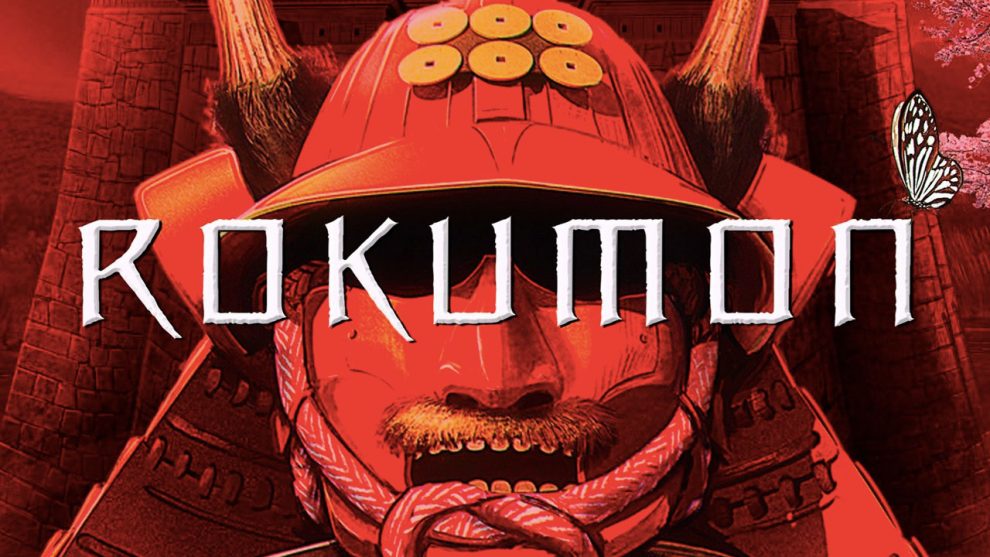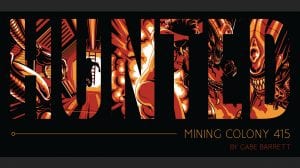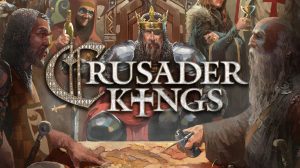Disclosure: Meeple Mountain received a free copy of this product in exchange for an honest, unbiased review. This review is not intended to be an endorsement.
Step with me, if you will, into Japan’s Sengoku era. A time of armor-clad samurai and aspiring shoguns, a time where clans waged war in open battle for the fate of an unborn country, a time where strategy was paramount because even a single misstep could spell disaster. That time…is now.
In Rokumon, from EX1ST Games, 2 players will battle it out as they reenact a series of clashes between the Tokugawa clan and the Sanada clan. Using only a handful of components, Rokumon tries to capture the feel of a sweeping historical campaign in the span of a lunch break. Does it succeed?
How to Play
A full game of Rokumon will take place over 6 rounds (called Acts) with a 7th round as a tiebreaker if needed. In each round, both players are trying to outmaneuver their opponent in order to meet one of the victory conditions first. Doing so ends the round immediately. The victory conditions for each player are simple: create a line containing 3 of their Warrior tokens in a row, create a stack of 3 of their tokens, or prevent the opponent from being able to take a legal move on their turn.
The play area is created fresh each round by shuffling and placing the game’s tiles in a specific pattern (a horizontal line of 3 at the top with a horizontal line of 3 or 4, depending on the round, directly underneath). The face of each tile has either a green or gold coin.
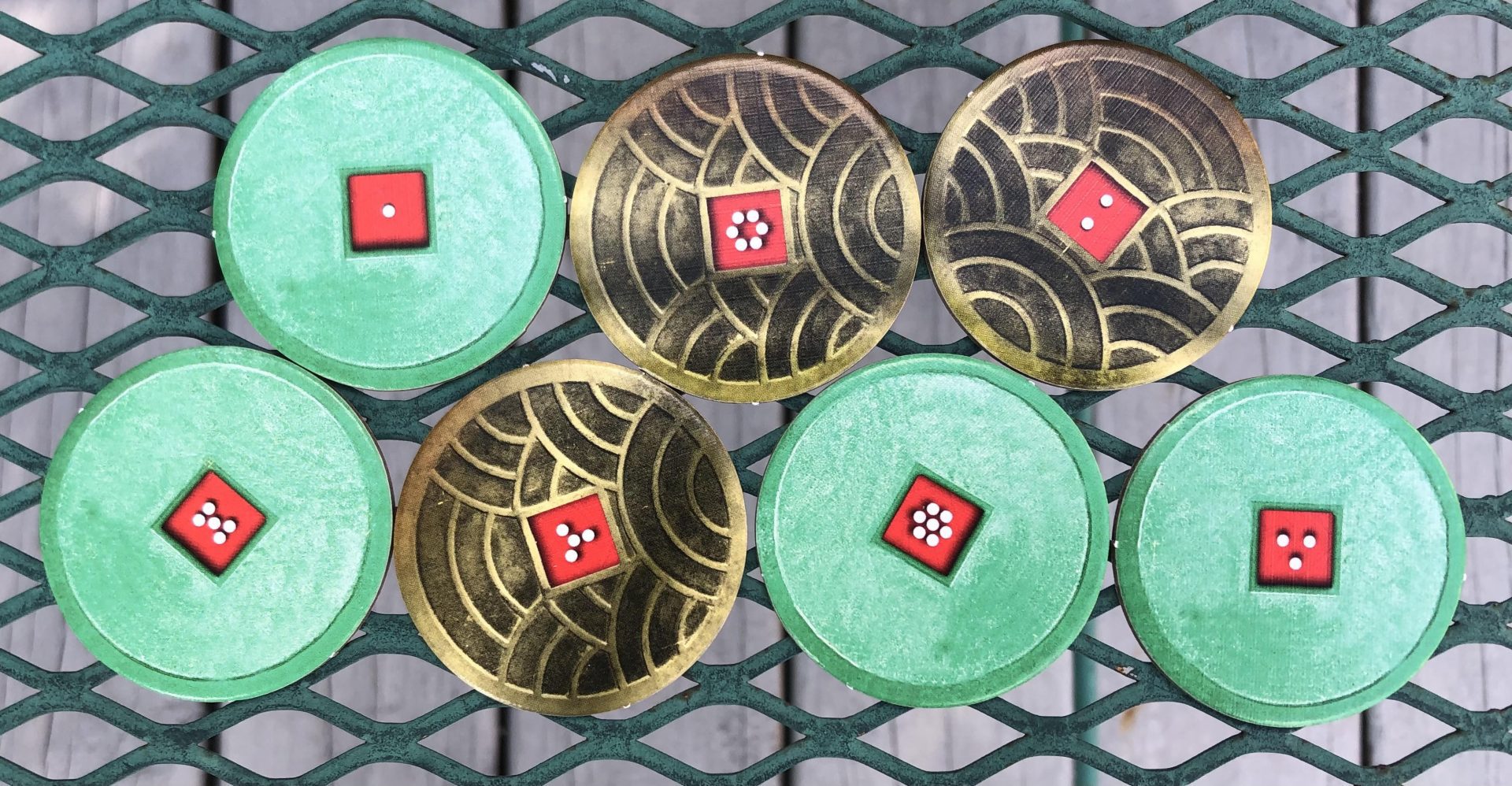
On a player’s turn they’ll take a single action. In the first round, players have 2 choices for their action: either place one of their Warrior tokens on an unoccupied tile OR move one of their tokens. To move a token, the two tiles must have different faces (i.e., a player cannot move from one green coin to another). If there is already a token on the tile being moved to, the player stacks their token on top. This prevents the token underneath from moving. If there are already 2 tokens in the stack, a player can only move a third onto the pile if it would complete a stack of 3 and win them the round.
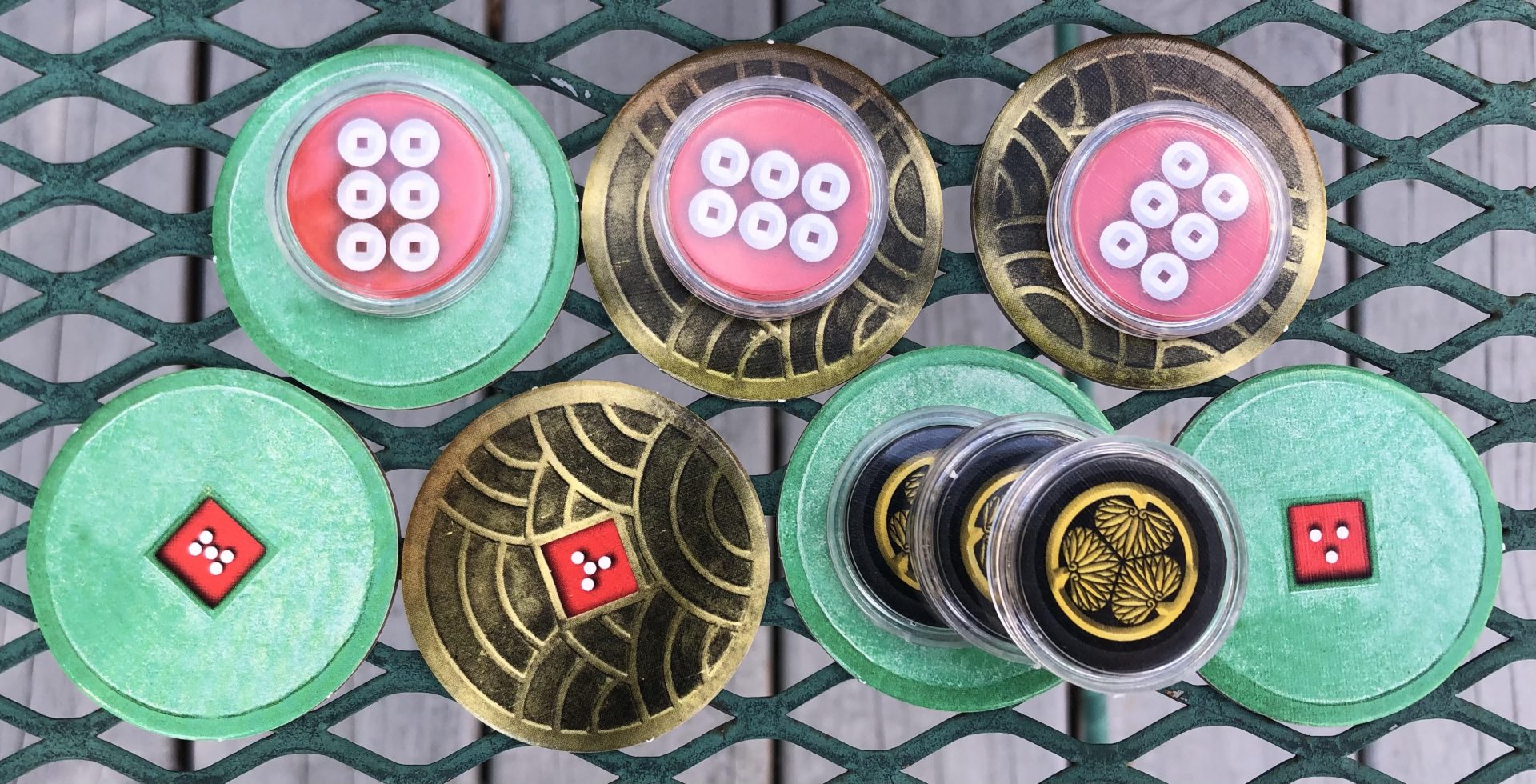
In later rounds, players will have additional actions at their disposal. For example, while Warriors are generally played face-down, players gain the ability to fight each other using a simple combat resolution system. If two opposing tokens are stacked on the same tile either player can declare a combat, revealing each Warrior’s hidden strength value. The lower-value warrior is removed from the board (though it can be redeployed on any subsequent turn). Players also gain the ability to rearrange a single coin tile on the battlefield, carrying any tokens on it to the new location. These cumulative tweaks add tactical and strategic considerations as the game heats up.

The light asymmetry between the factions also adds fuel to the fire. The Tokugawa clan has 5 Warriors to Sanada’s 4, allowing Tokugawa to more easily outmaneuver Sanada. However, Sanada has the strongest single Warrior, giving them a powerful unit capable of stopping their opponent once combat becomes an option. Of course, Tokugawa has a dedicated Warrior which can only defeat that one, leading to a series of thrusts and feints as both sides try to seize the advantage.
Each time a player loses a round they will receive a Revenge token. This tracks the score as well as providing a one-time bonus to a unit’s combat strength. Used tokens are flipped face-down. By the final round, which is played with all Warriors face-up, each player could have several tokens for use in combat.

After 6 rounds, the player with fewer Revenge tokens (used or unused) wins the game. If the players are tied, a final 7th round is played to determine the winner.
Final Thoughts
Rokumon is a tricky game to analyze. It strides confidently along the line between simplicity and elegance. The earliest rounds lean to the former while the later rounds…well, they’re still pretty simple too. There just isn’t that much game here: once you’ve played the full thing once or twice, you’ve seen everything it has to offer.
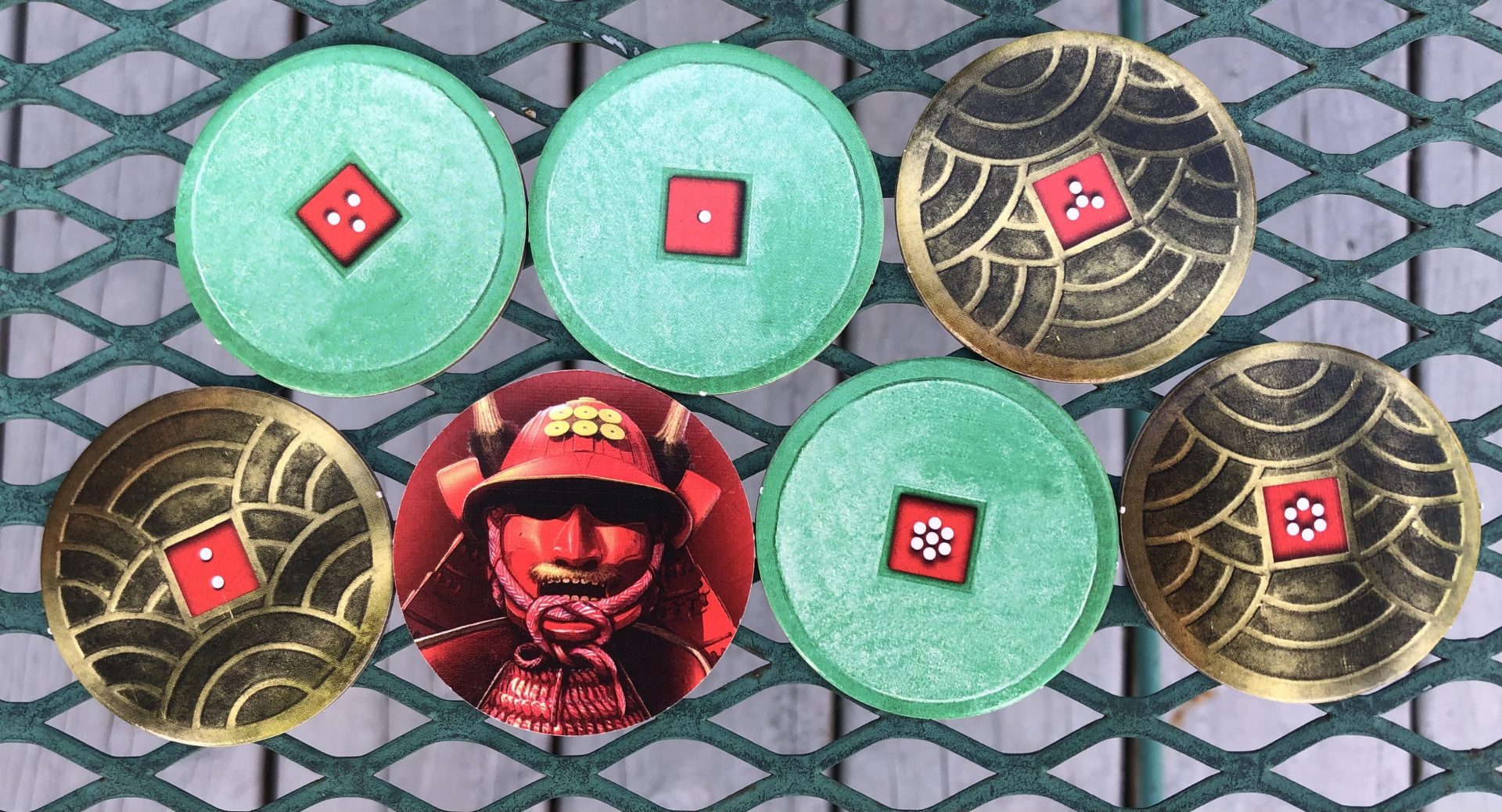
And yet, I kept finding myself drawn back to it long past those first few plays. Not because it offers deep strategic density but specifically because it doesn’t. It’s so phenomenally easy to understand that you can play it with absolutely anyone (including children). It’s well-balanced, too, with neither side feeling decisively overpowered. The built-in progression is implemented nicely to both introduce new players and add a campaign feel to a very short game. With 6 different rounds, I thought I would end up favoring a few over others, but I actually quite enjoy the way each one is a distinct puzzle.
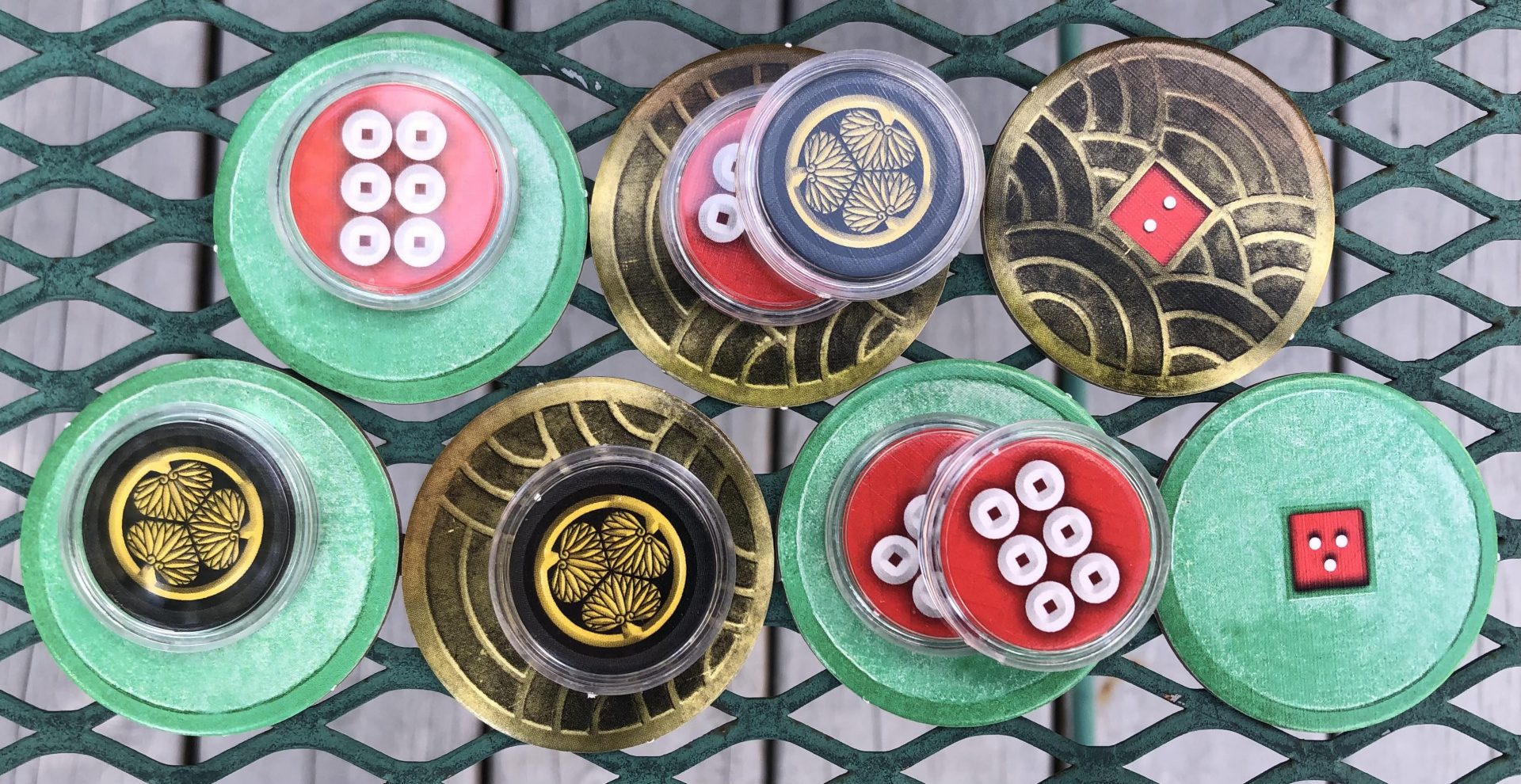
While the gameplay feels fairly abstract, there’s just enough care shown to the theme to satisfy my craving for a narrative. The rulebook also has some solid historical information that players can use as a springboard to learn more about the Sengoku era.
Rokumon settles into a very particular and competitive niche: it’s a quick-playing light strategy game that’s portable and accessible. What sets Rokumon apart for me is the ease of play — everyone knows tic-tac-toe so the scoring rules require almost no teaching time — and the mini-campaign feel that turns a 5-minute skirmish into a 20-minute war. I genuinely like Rokumon, and though it might not be everyone’s cup of tea, it’s one I’ll keep on hand for when I need something small and strategic to pass the time.


